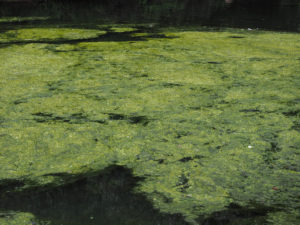Addressing the Nuclear Waste Issue

“Addressing the Nuclear Waste Issue with Common Algae”
Article by Northwestern University. April 6, 2011.
Important Points:
- Researchers are the first to show quantitatively how Closterium moniliferum, one of the bright green algae often seen in ponds, sequesters strontium (in the form of barium-strontium-sulfate crystals).
- Strontium-90 has a half-life of about 30 years, is chemically very similar to calcium and thus is drawn to bone. The cumulative cancer risk from strontium-90 exposure when strontium is bound in bones is very high.
- The algae first soak up barium, strontium and calcium from their watery environment. Strontium then is sequestered along with barium in the crystals, which remain in the cells, while the calcium is excreted from the cells. (Barium must be present for the organisms to take up strontium.
- The crystals are located in the organisms vacuoles, at the tips of the cells.
https://www.sciencedaily.com/releases/2011/04/110404131458.htm
